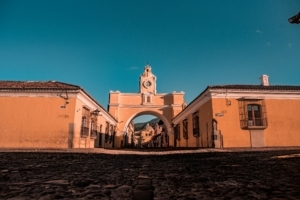
Quaternary Environments and Humans
 Quaternary Environments and Humans (QEH), the full Open Access INQUA/Elsevier Journal, publishes peer-reviewed papers under the auspices of the leading Quaternary association, focusing on recent advances in Quaternary sciences that appeal to a wide audience and combine approaches from several disciplines.
Quaternary Environments and Humans (QEH), the full Open Access INQUA/Elsevier Journal, publishes peer-reviewed papers under the auspices of the leading Quaternary association, focusing on recent advances in Quaternary sciences that appeal to a wide audience and combine approaches from several disciplines.
QEH will encompass a full spectrum of joint specialists from the physical and natural sciences, archaeology and the humanities, representing the four pillars, including geoarchaeology, bioarchaeology, material culture and modelling studies.
The policy is to publish interdisciplinary and transdisciplinary contributions reporting and promote debates on the long-term and multifaceted relationship among changing climates, environments and the hominins in the Quaternary.
QEH aims to promote the Quaternary Sciences through a rigorous scientific approach that is combined with diversity, equity, and inclusion.
Editor-in-Chief
Andrea Zerboni, Università degli Studi di Milano, Italy
Editors
Silvia Bello, Fumie Iizuka and Jan Kolář
News
These days, we celebrate the two-year anniversary of the journal’s official launch, which took place in July 2023 during the INQUA Congress held in Rome. Since then, the journal has published dozens of Open-Access articles, including several thematic special issues dedicated to different aspects of the interaction between humans and the environment throughout the Quaternary. We expect the journal to be soon included in major scientific databases, which will make it even more attractive to the entire community. The success of the journal is due to a formidable team of Editors, a multidisciplinary Editorial Board, and the continuous support of the INQUA ExComm and Elsevier’s officers. But above all, the journal’s success is thanks to the INQUA Community, which continues to submit contributions and accept invitations to review articles.
Editor’s choice
This time, instead of selecting the three most significant articles, I would like to suggest reading an article collection recently published in QEH and dedicated to a new site in Indonesia where fossil fragments of Homo erectus have been identified: the Madura Strait.
The 4 articles published by Berghuis et al. explore various aspects of this highly interdisciplinary research, presenting the anthropological and paleontological findings, the environmental context of H. erectus occupation in the area, the formation processes of the archaeological deposit, and the broader significance of this discovery at both a regional and global scale. The articles and an editorial are available at the links below:
More on publications
Latest developments
View moreLatest developments Quaternary International Editorial Team Update
Quaternary International Editorial Team UpdateWarm greetings with gratitude to the outgoing Associate Editors!
 Paleopedology newsletter Issue 36
Paleopedology newsletter Issue 36Paleopedology newsletter Issue 36, September 2025 is now out!
 INQUA HABCOM Meeting – Developing a Good Application
INQUA HABCOM Meeting – Developing a Good ApplicationProjects and Fellowships – Developing a Good Application We are pleased to announce the upcoming INQUA HABCOM Meeting focused on supporting researchers in preparing strong applications for INQUA Projects and Fellowships. 📅 Date: 3 September…
 Podcast INQUA India 2027
Podcast INQUA India 2027Quaternary is the age when modern recognisable humans started inhabiting this planet. All over the world scientists are engaged in studying various aspects of human evolution. Once every 4 years scientists from all across the…
 Podcast INQUA 2027 India
Podcast INQUA 2027 IndiaQuaternary is the age when modern recognisable humans started inhabiting this planet. All over the world scientists are engaged in studying various aspects of human evolution. Once every 4 years scientists from all across the…
 2026 PATA Days
2026 PATA DaysPATA Days are the main activity of TERPRO’s project CHAMP. PATA stands for International Workshop on Paleoseismology, Active Tectonics and Archeoseismology.



